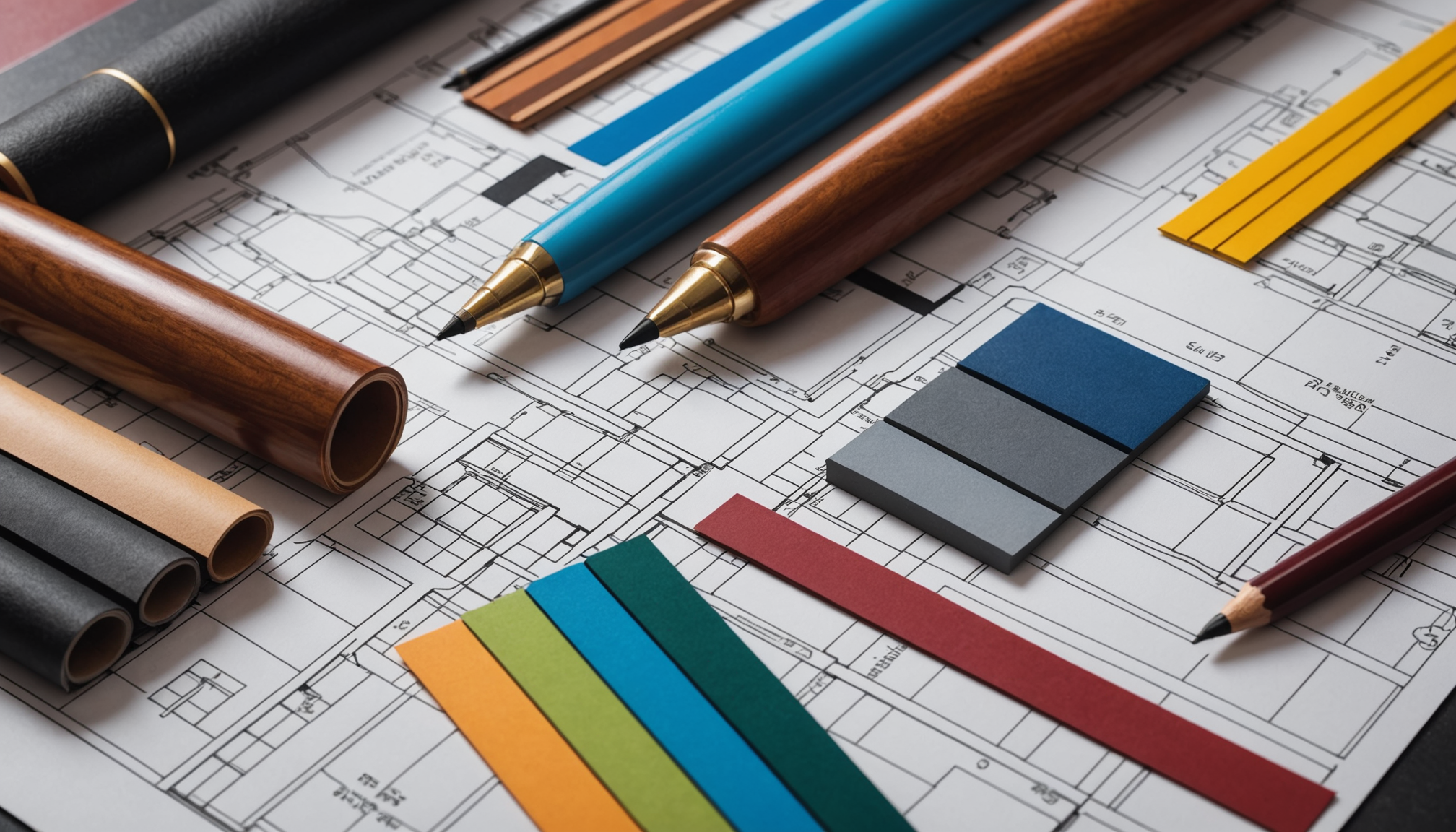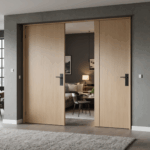The cost of a home addition can vary significantly due to a multitude of factors. When planning such a project, it’s crucial to understand the elements that will influence your budget, enabling you to make well-informed decisions. One of the principal factors is the size and complexity of the addition itself. Naturally, larger additions require more materials and labor, which can quickly escalate costs. Moreover, if the design includes complex architecture or intricate details, additional expertise and time will be necessary, further driving up the expenses.
Location is another critical element affecting the cost of a home addition. Regional variations in material prices and labor rates can greatly influence the overall budget. For instance, construction costs in urban areas tend to be higher than in suburban or rural settings due to increased demand and higher living expenses for laborers. Local building codes and regulations can also add to the costs if special permits are required or if the project must meet specific standards.
Material selection plays a pivotal role in determining the cost of your home improvement. Premium materials such as high-end granite countertops or hardwood flooring will naturally be more expensive than more budget-friendly alternatives like laminate or vinyl. These choices not only affect the upfront material cost but can also influence future maintenance expenses. Energy-efficient options, while perhaps more costly initially, can provide long-term savings and add value to the home.
Labor costs are another significant factor. Depending on the project’s complexity and local labor market, these expenses can constitute a significant portion of the total budget. Hiring skilled professionals such as architects, engineers, and specialized tradespeople can be costly, but they ensure quality and compliance with safety standards. However, choosing less experienced contractors to save money may result in inferior workmanship, leading to potential issues and added costs down the line.
Timing can also impact the overall cost of a home addition. Seasonal fluctuations, such as increased demand for construction during certain times of the year, can cause fluctuations in pricing for both materials and labor. Planning the project during off-peak seasons might present an opportunity for reduced rates.
Below is a comparison of cost factors for different dimensions of the same home addition project, highlighting how each element can influence the overall expense:
| Factor | Small Project Estimate | Medium Project Estimate | Large Project Estimate |
| Size | $15,000 | $40,000 | $100,000 |
| Materials | $5,000 | $15,000 | $35,000 |
| Labor | $7,000 | $18,000 | $45,000 |
| Permits & Regulations | $2,000 | $5,000 | $10,000 |
Understanding these factors and how they interact can greatly assist homeowners in effectively budgeting and planning their home addition projects. By considering each component carefully, from size and materials to location and timing, you can develop a comprehensive financial plan that aligns with your home improvement goals.
comparing different types of home additions
When considering adding a new space to your home, it’s essential to compare the different types of additions available and understand how each one can impact your remodeling project’s overall cost. Here’s a breakdown of the most common types of home additions, along with their potential benefits and financial implications:
1. Room Additions:
– Description: Typically involves adding a single room, such as a bedroom, bathroom, or home office.
– Cost Factors:
– Foundation: New foundations can increase expenses, particularly if your home has a basement or other complex foundation needs.
– Utilities: Integrating electricity, plumbing, and HVAC systems into the new room can be costly, especially if these systems are being expanded or upgraded.
– Finishing: The choice of finishes for flooring, walls, and fixtures (standard vs. high-end) will also affect the budget.
– Benefits: Increases functional living space and commonly enhances resale value by adding desirable features like an extra bedroom or bathroom.
2. Bump-Outs:
– Description: Smaller extensions of existing rooms, like enlarging a kitchen or bathroom.
– Cost Factors:
– Structural Modifications: May require minimal structural changes, which can keep expenses lower than full-scale additions.
– Integration: Seamlessly merging the bump-out with existing architecture is important for aesthetics and can add to costs.
– Benefits: Provides additional usable space without the need for significant structural work, often a more budget-friendly option.
3. Garage Conversions:
– Description: Converting a garage into livable space, such as a game room or additional bedroom.
– Cost Factors:
– Insulation & HVAC: Adapting the space to be habitable can involve retrofitting insulation and extending heating or cooling systems.
– Door Replacement: Transforming garage doors into standard walls with windows often requires skilled labor.
– Benefits: Utilizes existing square footage, making it a cost-effective way to expand living space without enlarging the home’s footprint.
4. Second-Story Additions:
– Description: Adding an entire story atop the existing structure.
– Cost Factors:
– Structural Reinforcement: Requires significant construction work, potentially needing structural reinforcement of the first floor.
– Access & Egress: Installation of staircases and compliance with fire escapes or building codes adds complexity.
– Benefits: Drastically increases square footage without taking up yard space, often significantly boosting the home’s value.
5. Sunrooms:
– Description: Typically enclosed rooms that offer panoramic views, often used as lounging or recreational areas.
– Cost Factors:
– Material Choices: Costs may vary based on materials like insulation, glass type, and framing.
– Climate Control: Installing heating and cooling systems suitable for year-round use can significantly affect the budget.
– Benefits: Provides a versatile space for enjoyment and relaxation, potentially enhancing curb appeal and lifestyle quality.
Each type of home addition has its own set of financial and logistical considerations. By understanding the unique aspects and cost factors associated with each, homeowners can make an informed decision that aligns with both their budget and their long-term home improvement objectives.
estimating material and labor expenses
When undertaking a home addition or remodeling project, accurately estimating material and labor expenses is crucial to avoid unexpected financial burdens. A clear understanding of these costs enables homeowners to plan effectively and make informed decisions throughout the construction process.
Firstly, the material cost is a significant component of any home improvement budget. Materials range in quality and price, and the choices significantly impact the overall cost. Premium materials, such as custom cabinetry, marble countertops, or imported tiles, add not only aesthetic value but also increase the budget substantially. On the other hand, selecting more economical materials like laminate or ceramic tiles can keep costs manageable without sacrificing style. It is essential to balance between quality and cost to ensure durability and satisfaction with the final outcome.
In addition to base materials, accessory and finishing costs should be accounted for. These include everything from light fixtures and doorknobs to paint and trim, which can cumulatively represent a considerable expense. Overlooking these details during the initial budgeting phase can lead to an underestimation of the total required investment.
Labor costs are equally critical and are often influenced by the complexity of the home addition project. Highly skilled tradespeople such as electricians, plumbers, and carpenters typically come with higher price tags, reflecting their expertise and the quality of work delivered. If the remodeling involves specialized construction, like installing complex HVAC systems or intricate woodwork, expect these costs to rise correspondingly. Nevertheless, investing in qualified professionals ensures adherence to local building codes, safety standards, and overall project integrity, reducing the likelihood of future issues.
Additionally, labor expenses vary regionally. Urban areas generally have higher labor rates compared to rural counterparts, due to the cost of living and demand for skilled workers. Homeowners should undertake careful research or consult with local contractors to get reasonably accurate labor estimates tailored to their project’s geographical location.
Unforeseen circumstances, such as adverse weather conditions or unexpected structural challenges, can also influence material and labor expenses. Contingency budgeting is recommended, often adding an extra 10-20% of the anticipated total project cost, serving as a financial buffer for these potential surprises.
Overall, a meticulous approach to estimating material and labor costs can greatly enhance the budgeting process. By factoring in the quality and choice of materials, regional labor rates, and project-specific complexities, homeowners are better prepared to embark on home improvement endeavors that are not only aesthetically pleasing but also financially manageable.
hidden costs to consider
When planning a home addition project, it’s essential to account for various hidden costs that can catch homeowners off guard. These expenses, although not immediately apparent in the initial calculations, can significantly affect the overall budget and should be carefully considered to avoid financial strain.
One common hidden cost involves obtaining necessary permits and addressing zoning requirements. Many jurisdictions require specific permits to ensure that home improvement projects comply with local building codes and safety standards. The permit fees can vary depending on the scope of the construction and local regulations. It’s crucial to check with your local building department to fully understand these requirements and their associated costs.
Utilities are another area where unexpected expenses can arise. Extending your home’s existing systems, such as electrical, HVAC, and plumbing, to accommodate the new addition can lead to costly upgrades. For instance, your current systems may not have the capacity to support the additional load, necessitating a complete overhaul. Consulting with a professional to evaluate your current utility systems can provide a clearer picture of the potential costs involved before construction begins.
Structural modifications may also be necessary, particularly if the addition involves expanding or modifying walls, roofs, or foundations. These changes can require specialized labor, materials, and expertise, leading to increased project costs that are not always accounted for in initial estimates. It’s advisable to have a thorough assessment of your home’s current structure to anticipate and plan for these possibilities.
Insurance is another often overlooked factor. Adding new square footage to your home may require adjustments to your homeowner’s insurance policy. This could include increasing your coverage limits to account for the added value of the new space or additional liability coverage if the project involves significant changes. Contact your insurance provider to discuss how your policy might need updating and what costs this might entail.
Landscaping and finishing touches can also contribute to unforeseen expenses. Once the construction is complete, restoring your outdoor space to its original condition or making improvements that complement the new addition may be necessary. This might involve grading, planting, or installing new pathways and lighting, each adding another layer to your project’s financial commitment.
Lastly, including a contingency fund in your budget is a prudent measure. This buffer, typically around 10-20% of the expected budget, accommodates unexpected challenges or price fluctuations in materials and labor. By planning for the unexpected, you can ensure financial readiness throughout the remodeling process.
Staying informed about these hidden costs is vital for maintaining control over your home addition budget. For a seamless and well-managed home improvement journey, consider consulting professionals early in the planning process. To connect with trusted local experts in your area, visit LocallyFind.com, a comprehensive home services directory designed to help homeowners find the right professionals for their needs.
maximizing the value of your investment
To ensure that you derive the utmost benefit from your home addition project, it’s pivotal to approach the endeavor with strategic planning aimed at maximizing value. One effective strategy is to prioritize functional design that augments both the utility and appeal of your home. Think of features that modern buyers desire, such as open floor plans, energy-efficient upgrades, or additional bathrooms, which can substantially enhance your home’s market value and improve your quality of living.
Investing in quality materials is another key aspect. While the allure of cost-saving options can be tempting during construction, opting for durable, high-quality materials provides long-term savings through minimal maintenance and extended lifespan. For instance, using weather-resistant materials for external constructions or choosing premium fixtures for bathrooms and kitchens can prevent frequent repairs and future remodeling needs.
In addition to material selection, incorporating energy-efficient features can significantly increase your home’s resale value while reducing ongoing costs. This includes installing high-efficiency HVAC systems, energy-effective windows, or solar panels, which not only decrease utility bills but are also attractive features for environmentally conscious buyers.
Integrating smart home technology is becoming increasingly popular and can maximize the value of your remodeling investment. Consider installing programmable thermostats, smart lighting, or home security systems. These features enhance lifestyle convenience and appeal to potential buyers looking for modern technology solutions.
Regular maintenance throughout the home addition process is essential to preserve the asset’s condition and prevent issues from escalating into costly repairs. Scheduling inspections during and after construction ensures that standards are adhered to, ultimately safeguarding your investment.
Conversely, while it can be tempting to tackle some elements of a project to cut costs, certain aspects should remain in the hands of professionals. Engaging experienced contractors, architects, and designers can make the difference in the outcome, ensuring the structural integrity and aesthetic appeal of the addition, which are crucial for value retention.
By implementing these strategies and maintaining a balanced approach between costs and quality, homeowners can significantly improve the return on their home improvement investment. Carefully crafted plans focusing on quality, efficiency, and future needs can transform your living space into a valuable and cherished asset.
In conclusion, a well-executed home addition project necessitates careful consideration of various factors to truly reflect its costs and value. From understanding the multitude of cost-influencing elements and comparing different types of additions to accurately estimating expenses and accounting for hidden costs, the process requires thorough planning and informed decision-making. By maximizing the investment’s value through strategic enhancements and professional guidance, homeowners can ensure their new spaces are not only cost-effective but also valuable additions that enhance both lifestyle and property worth.


